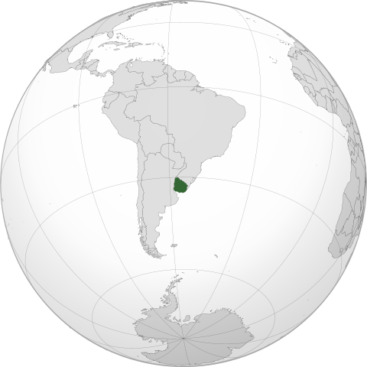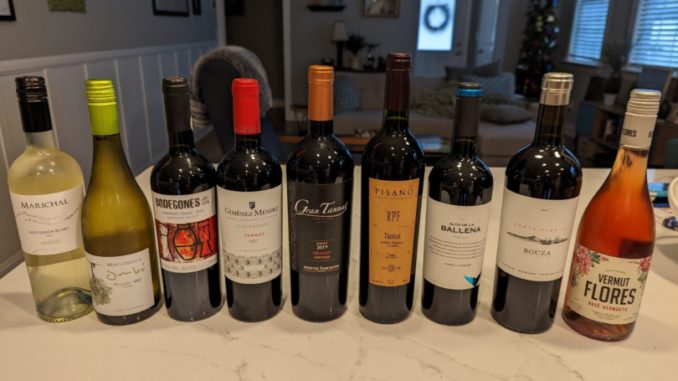
I’ve been on a kick lately of opening wines from countries that make great wine, but that maybe aren’t as well known to the general wine public–Austria, Chile, Portugal…and now I definitely need to add Uruguay to the list.
A Bit of Background
First, it’s worth noting that this wasn’t my first time trying wine from Uruguay. Several years ago (almost 10 actually), I visited the Uruguay embassy in Washington DC for a tasting of Tannat and some of the other grapes that Uruguay produces. It was a fun experience and one that helped pique my interest for this tasting.
While one of the smaller countries in South America, both in terms of land, at just over 181,000 square kilometers, and population, right around 3.4 million people, they have 164 active wineries (most of which are near the capital of Montevideo) producing 90+ million kilograms of grapes harvested each year.
Even more impressive, 70+ million litres of the wine produced in the country are consumed in the country; that’s about 93% of their production. Yep, just 7% of the wine produced in Uruguay is exported to other countries.
Wine Production
Most of the wineries in Uruguay are a family business, with most being 3rd or 4th generation ownership and production as of this writing. Uruguay’s approach to wine is a mix of old and new world styles and grapes, made with a balance of acidity and alcohol to create enjoyable wines that don’t skew too hard in any one direction.
With six central wine-making regions, Uruguay produces Tannat (their main grape), Merlot, Cabernet Sauvignon, and Cabernet Franc in reds, and Sauvignon Blanc, Chardonnay, Viognier, and Albarino in whites, along with a few others in both categories. Fully 50% of harvesting is done by hand (which, if you’ve ever participated in a grape harvest, you know how impressive that is–my back hurts just thinking about it).
Climate & Soil
Uruguay features a maritime climate (which makes sense since they’re on the eastern coast of South America), and the soil features lots of granite and clay, particularly on the east coast. In fact, because of their climate and soil mixture, Uruguay has more in common with Bordeaux than the much closer Argentina and Chile, as both Bordeaux and Uruguay feature a mild, slightly humid climate that enables the grapes they grow to prosper.
The Wines
But what about the wines we tried as part of this tasting? There were 9 in total: 2 whites, 6 reds, and 1 rose’ of vermouth (stick with me…it was something). So let’s jump in.
2022 Marichal Sauvignon Blanc
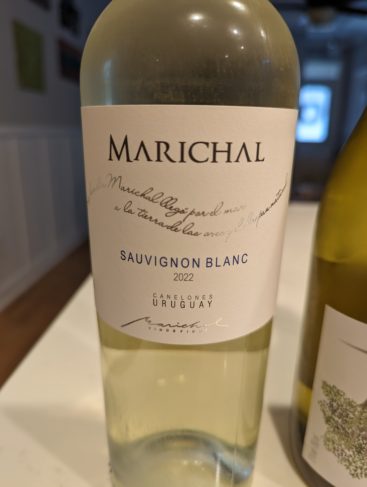
100% Sauvignon Blanc. Light yellow in color with slashes of green. On the nose I got aromas of lime, gooseberry, and asparagus. The nose was dry, and crisp, with a touch of acidity, but not enough to burn the nostrils. In the mouth I got flavors of lime, stone fruit, hints of peach, asparagus, and lemongrass with just a touch of mineral on the finish. The wine was nicely balanced, with just the right amount of acidity to help keep it fresh without making my teeth hurt. At $14 SRP it’s a great value, and definitely one I’d like to be able to find at one of my local shops in Raleigh, NC for the summer to pair with seafood, ceviche, or some mild cheeses.
2022 Bracco Bosca Ombu Moscatel
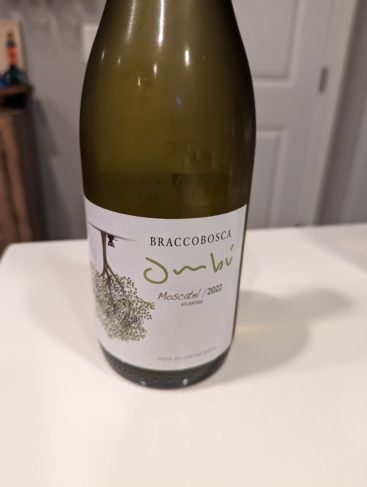
100% Dry Moscatel. This was a new grape for me, and my brain instantly translated “Moscatel” into “Muscadine” thanks to living the Carolinas. I couldn’t have been more wrong. Pale yellow with greenish highlights in the glass, the nose was fresh and floral, with notes of white flowers and jasmine and just a touch of citrus to balance it out. In the mouth the wine continued the floral notes from the nose, with the citrus becoming slightly more pronounced, but not overwhelming the palate. At $16 SRP it was another great value, and I’d love to pair this with sushi or some type of blue cheese.
2020 Bodegones del Sur Vineyards Select Cabernet Franc
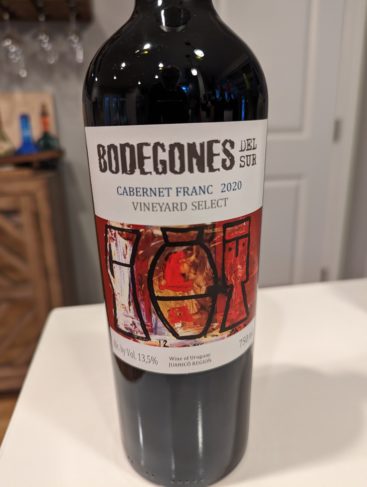
100% Cabernet Franc. I was a bit surprised when the first red we tried wasn’t Tannat, but I certainly wasn’t disappointed (I do like some Cabernet Franc). In the glass the wine was a deep purple color with violet hues around the edge. I got aromas of red fruits, spices, and chocolate most prominently. In the mouth the wine had pronounced tannins, with flavors of ripe blackberries, mint, pepper, cassis, and dried herbs. The wine was light and bright, and struck me as being very food friendly–I think any roasted or grilled meats and vegetables would be a great pairing for this wine. $20 SRP is a great price point for this wine. And, as a side note, I absolutely loved the label.
2020 Gimenez Mendez Alta Reserva Tannat
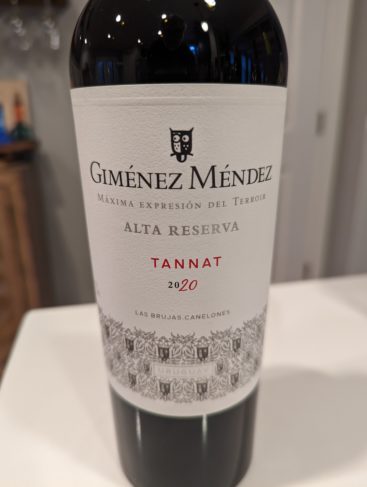
100% Tannat. Quick spoiler: I really liked this one–maybe my best value buy of the tasting. On the nose I got a fantastic mix of red fruit and bacon/meat; a sorta smoky note that I very much enjoyed, especially when balanced with the red fruit notes. In the mouth the wine was dry, with flavors of cedar, smoked meat, and black fruit. Even with a 14% alc/volume, the wine was smooth and easy drinking, with a medium body. For $18 SRP it’s a steal, and would pair great with roasted red meats, pastas, and aged cheeses.
2019 Montes Toscanini Grand Tannat Premium
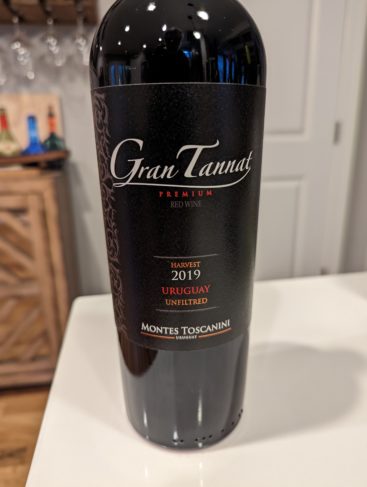
100% Tannat. The first of the bigger wines in this tasting. A deep purple color matched the aromas of ripe dark fruit, chocolate, and coffee that I picked up. In the mouth the wine was balanced and elegant, with flavors of ripe red fruit and candied cherries. During the tasting I kept circling back to the word “luxurious” in my notes; not only because of the way the wine coated the palate while still maintaining some brightness but just because of the decadent aromas and flavors. Normally I’m sceptical of wines priced over $40, but even at $59 SRP the 2019 Montes Toscanini Grand Tannat Premium seemed like a great value.
2018 Pisano Reserva de la Familia Tannat
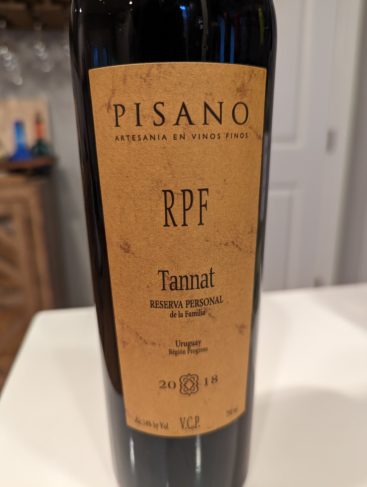
100% Tannat. One of the two oldest wines in the tasting. In the glass the wine was an intense garnet ruby color; just slightly opaque to where light still passed through, but not by much. On the nose I got aromas of meat, bacon, and smoke, none of which carried through to the palate. Instead, in the mouth the wine was bright and fresh, with tart red fruit, raspberries, and blueberries coming through in a concentrated, tannic wine with a dry ending. At $24 SRP you can easily pair this wine with red meat, fatty cheeses, or hard Parmigiano-style cheeses.
2018 Alto de la Ballena Tannat-Viognier
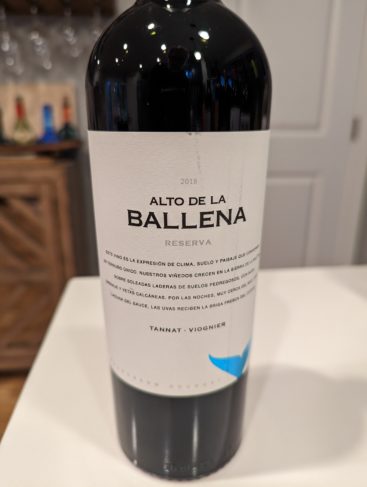
85% Tannat & 15% Viognier. Our first blend of the tasting! I’ll admit, that I was curious about using Viognier as a blending grape with…Tannat. But I have to say, it works really well. A deep, opaque wine with colors of purple and violet, the Alto de la Ballena showed aromas of red fruits, vanilla, and a bit of spice balanced by some floral notes I attributed to the Viognier. In the mouth the wine was lush and juicy, with flavors of ripe red berries, and dried herbs with soft tannins and a lingering finish. At $24 this is a great value, as you can spend easily twice this much on a bottle of wine with this much character, depth, and, to use the word again, “lushness.”
2019 Bouza Monte Vide Eu
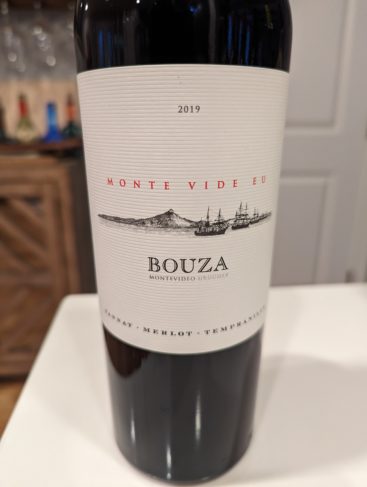
50% Tannat, 30% Merlot, 20% Tempranillo. Our final red of the tasting, and our second blend. The 2019 Bouza Monte Vide Eu was a dark garnet and ruby red in the glass with a clear rim. On the nose I got aromas of red fruit, eucalyptus, and dried herbs, all of which carried through to the palate. In the mouth the wine was bright, with a long, clean finish; it managed to say around just long enough without coating the palate and overstaying its welcome. At $67 SRP it was the most expensive wine of the tasting, but much like with the Montes Toscanini, I have a hard time saying it’s not worth it–my usual reticence about wines at this price point was pushed aside for some amazing flavors and nuance. Probably not one you’re opening every night, but definitely one to open for that special occasion and pair with some roasted meats and aged cheese.
Basta Spirit Vermut Flores Rose’
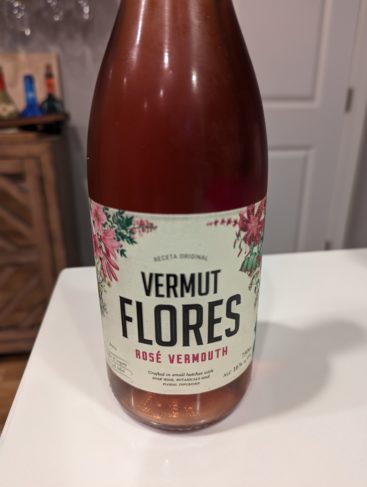
100% Tannat. Ok, you ready to get weird? We wrapped up the tasting with a rose’ vermouth of Tannat. And…it may have been my favorite thing of the tasting. Don’t get me wrong, the rest of the tasting was amazing, and top to bottom I recommend the wines, but this was so unique that I really need to spend some time focusing in on it.
Medium pink in color, you’d be forgiven at first for thinking this was a normal bottle of crisp rose’ to enjoy on a hot day. But once you open it, it hits you with aromas of olive, tea, elderflower, herbs, and floral notes, along with flavors of a chinese spice market, with lots of spice and mulled flavors and a dry finish.
You can absolutely enjoy this by itself, ideally over some ice. But, add in a splash of sparkling water and a twist of orange, and you have a great aperitif to enjoy before dinner (which is how my wife and I ended up enjoying most of the bottle, to be honest) or as a refreshing spritz on a hot day.
For $16 SRP it’s a great value, and definitely a bottle I want to try and find before summer rolls around to Central North Carolina again; sipping on some of these by the pool wouldn’t be the worst way to beat the heat and humidity we have here.
Wrapping Up
From top to bottom this was an amazing tasting. While I certainly had some favorites–the Marichal Sauvignon Blanc from the whites and the Alto de la Ballena Tannat-Viognier from the reds (along with the Vermut Flores Rose’ just being its whole own thing), there’s nothing on this list that I, or anyone reading this, should be embarrassed to take to a friends house to share.
While finding Uruguay wines might be a bit tricky depending on where you live, thanks to the internet, we have more access to wines from smaller regions like this than ever before, so I encourage everyone to reach outside their comfort zone and try what Uruguay has to offer–you won’t be disappointed.
Disclosure: I received these wines as free samples for a media tasting.
